|

HOME |
ABOUT | INDEX |
NEWS |
FACEBOOK |
CONTACT
SEX
AND GENDER
Biological | Sociological | Psychological | Emotional
Sex Versus Gender
What's the
difference?
People
often use the terms “sex” and “gender” interchangeably,
but this is incorrect. Sex and gender are different, and
it is crucial to understand why.
Sex refers to the physical differences between people
who are male, female, or intersex. A person typically
has their sex assigned at birth based on physiological
characteristics, including their genitalia and
chromosome composition. This assigned sex is called a
person’s “natal sex.”
Gender, on the other hand, involves how a person
identifies. Unlike natal sex, gender is not made up of
binary forms. Instead, gender is a broad spectrum. A
person may identify at any point within this spectrum or
outside of it entirely.



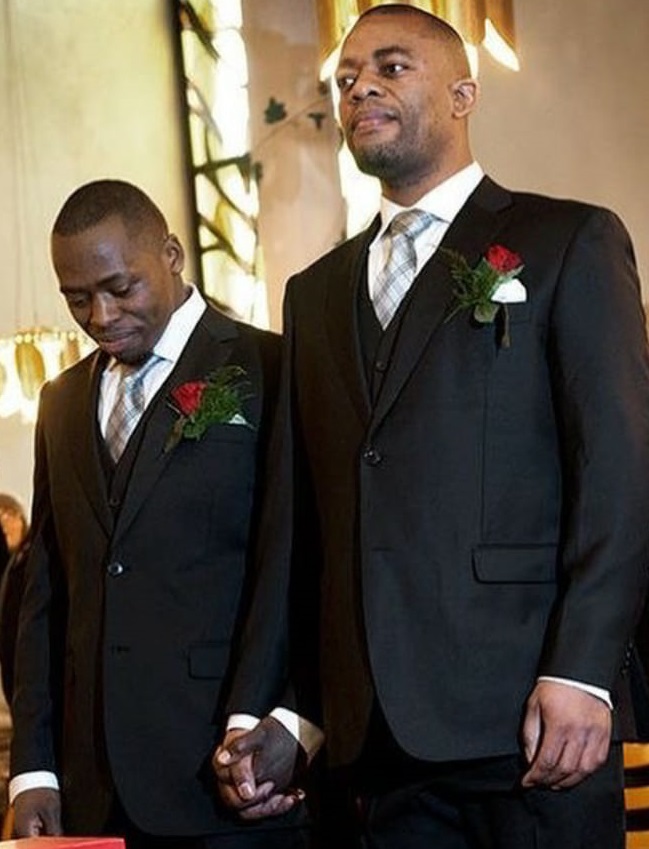
Queer 101: Difference Between Sex and Gender
Gender and Gender Identity
Sexual Orientation, Gender Identity, Gender Expression
This Is Me: Queer Identities
Sex Redefined: The Idea of 2 Sexes Is
Overly Simplistic
Healthline: Sex and Gender
Wikipedia: Gender Identity
Psychology Today:
Sex-Relevant Terminology
Sex and Gender Terms Explained
Courtney Act Answers Kids' Questions
About Gender
Scarleteen: Sex Ed For The Real
World
Queer Kid Stuff: Gender Expression
People may identify with genders that are different from
their natal sex or with none at all. These identities
may include transgender, nonbinary, or gender-neutral.
There are many other ways in which a person may define
their own gender.
Gender also exists as social constructs, as gender
“roles” or “norms.” These are defined as the socially
constructed roles, behaviors, and attributes that a
society considers appropriate for men and women.



For centuries, many societies have enforced the notion
that a person is either a man or woman based on their
physical characteristics. This idea conflates sex and
gender, which is incorrect. Sex and gender are not the
same.
In general terms, sex refers to a person’s physical
characteristics at birth, and gender encompasses a
person’s identities, expressions, and societal roles.
A person may identify with a gender that is different
from their natal sex or with no gender at all. The
latter identity is often referred to as nonbinary, but
this is an umbrella term that covers many
identifications.
[Source:
Medical News Today]
Sex and Gender: What is the Difference?
What is Morally Wrong With Homosexuality?
Things Men Hear That Are Bad for Everyone
Sex and Gender Terms Explained
Psychology Today:
Sex-Relevant Terminology
PBS Video: Pink for Boys? Blue for Girls?
Video Fun: Expressing Myself My Way
Katie Couric: What I Learned About Gender
Video: Gender Roles Taught at Home
More Than Just
Physical
It's also
psychological, social, and emotional
Sex and
gender are terms that are often used interchangeably and
frequently seen as synonymous. For purposes of a
discussion that leads to greater understanding of human
sexuality, let’s consider sex and gender as separate
concepts. Additionally, let’s examine variations and
aspects of sex and gender. And let’s further consider
the notion that one’s sex and gender may not be defined
in the extremes but instead along a continuum.
Sex and gender can be discussed and understood in terms
of physical, psychological, social, and emotional
perspectives. What do the various labels mean? What is
meant by sex, gender identity, gender expression, and
sexual orientation? This is an attempt to delineate the
differences and clarify the terminology.
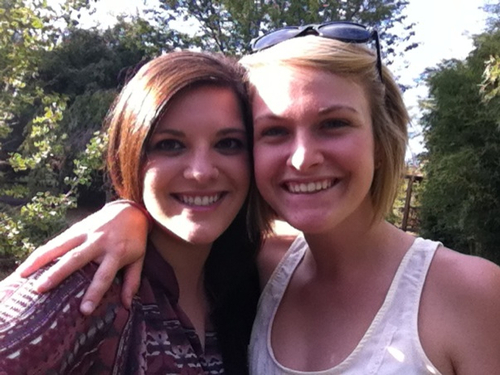

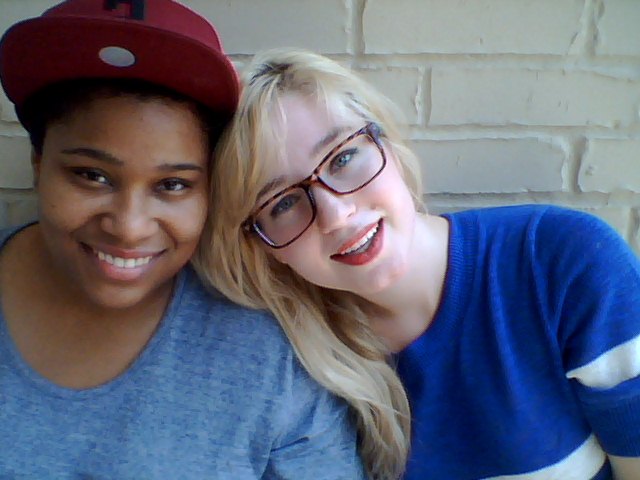
Genderbread Person
Sex and Gender: What is the Difference?
Trans and Gender Non-Conforming Identities
Sex and Gender Model
Misconceptions About Sex and Gender
Things Women Hear in a Lifetime That Men Just Don’t
Wikipedia: Sexual Orientation
Breaking Down The Binary: Sex Versus Gender
SEX
Physical
Male | Female
Sex is described with regard to physical elements and in
terms of one’s biology and anatomy. A person’s sex is
defined as his or her medical assignment (natal sex) as
manifest through organs, genitals, hormones, and
chromosomes. A person might be male or female. Or
a person might be intersex (hermaphroditic).
GENDER
IDENTITY
Psychological
Man | Woman
Gender
identity is one’s psychological understanding of self.
It is defined in terms of perceptions, and self concept.
A person’s gender identity can be described as the way
in which he or she views him or herself and how they
feel inside. A person might be a man (boy) or a woman
(girl). If a person's gender identity matches their
sex/gender at birth, they are referred to as cisgender.
Or a person might be transgender, genderqueer, agender,
two-spirit, or third-gender.
GENDER
EXPRESSION
Social
Masculine | Feminine
Gender
expression is a social construct. It can be defined with
regard to societal expectations and interpretations. It
is society's standards for masculine and feminine
presentation. A person’s gender expression can be
described as the way in which he or she communicates his
or her gender to others. It is manifest through outward
appearance, mannerisms, clothing, hair style, and speech
pattern. A person might be masculine (butch) or
feminine (femme). Or a person might be androgynous (andro)
or transvestite (drag).
SEXUAL
ORIENTATION
Emotional
Homosexual | Heterosexual
Sexual
orientation is described as one’s emotional identity. It
can be defined in terms of one’s romantic or erotic
response. A person’s sexual orientation is described
with regard to sexual behavior and is manifest through
attraction, affection, relationships, and love. A
person who is attracted to persons of the same sex are
homosexual (gay, lesbian) and a person who is attracted
to persons of the opposite sex are heterosexual
(straight). A person might also be bisexual (both
sexes), asexual (neither sex), or pansexual (all
variations).

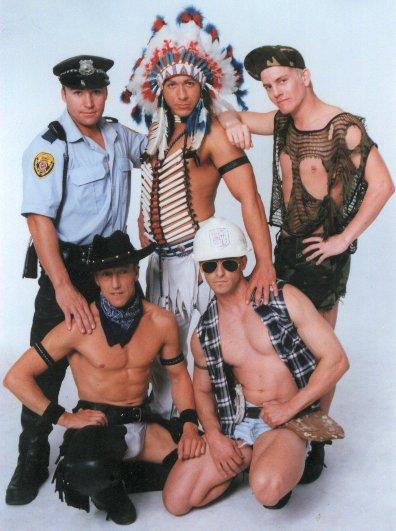

Misconceptions About Sex and Gender
Things Women Hear in a Lifetime That Men Just Don’t
Gender Rebels: Sex vs Gender
Bill Nye Science Guy: Sexuality and Gender Spectrum
TED Talk: Why I'm Done Trying to be Man Enough
Medical News Today: Sex and Gender
Turning Around Kids'
Assumptions of Gender Roles
Info: Gay Stereotypes
Like a Girl
Jessica: Are Labels
Important?
Kids' Honest Opinions About Being a Boy or Girl
Vihart: On Gender
Animation: Gender and Sexuality
Video: Sexual Orientation, Gender Identity,
Gender Expression
Feminine: A Short Film
There is Nothing Like a Dame
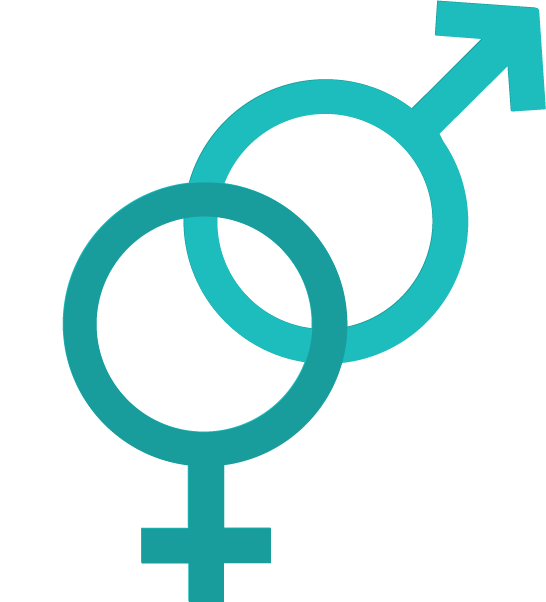
Sex and Gender
Across the Spectrum
Range of experiences...
In an attempt to
understand sex and gender, it is important to consider
new perspectives and ever-widening definitions and
understandings of sexual orientation, gender identity,
and gender expression as they exist across a spectrum of
experiences.
To that end, one of the key points is the
concept of a non-binary understanding of sex, gender,
sexual orientation, gender identity, and gender
expression. There is a long-respected
research-based view of an individual’s range of
experiences along a continuum. Matters of sex and gender
should not be defined in mutually exclusive dualistic
terms, but in more fluid, sometimes ambiguous, terms. It
is important to consider gray areas in between the two
black and white extremes. When thinking about sex,
gender, sexual orientation, gender identity, and gender
expression, researchers have come to embrace a view that
understands a range of experiences on a kind of
broad-band spectrum.

.png)
When thinking about the sexual notions of male and
female, we are asked to also consider a variety of
definitions in between the two binary labels, including
intersex presentations.
When thinking about the gender identity
notions of man (boy) and woman (girl), we are asked to
also consider a range of definitions in between the two
designations, including gender fluid, gender
non-conforming, gender variant, gender queer, and
agender identities. Transgender persons fall
within this spectrum.
When thinking about the gender expression
notions of masculine and feminine, we are asked to also
consider a variety of ambiguous or mixed expressions in
between, including
androgynous or unisex expressions.
When thinking about the sexual
orientation notions of heterosexual (straight) and
homosexual (gay, lesbian), we are asked to also consider
a range of definitions in between the two extremes,
including bisexual, pansexual, omnisexual, polysexual,
and asexual orientations.
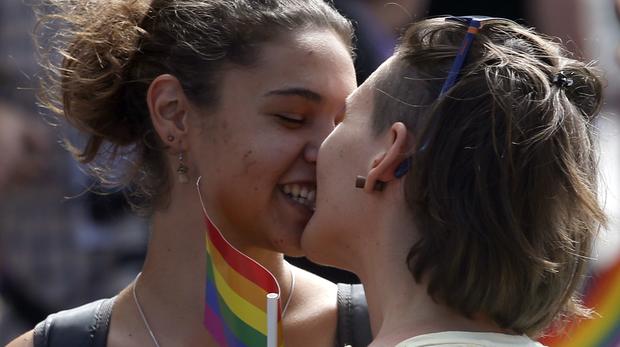


Dar Williams: When I Was a
Boy
Healthline: Sex and Gender
Misconceptions About Sex and Gender
Beyonce: If I Were a Boy
Explanation: Sexual
Orientation and Gender Identity
Glee Video: If I Were a Boy
Taylor Swift: I'd Be The Man
Tutorial: Sexual
Orientation, Gender Identity, Sexual Expression, Sex
Characteristics
Lies We Need to Stop Telling Girls About Sex
TED Talk: Sam Killermann Discusses Gender
Gender: A Short Film
Ursula K. LeGuin: On Being a Man
Sex Redefined: The Idea of 2 Sexes Is
Overly Simplistic
TED Talk: Gender is Not a Straight Line
Ash Hardell Video Talk: Spectrums 1
Info: Gender Identity
Children on Gender Roles

Pink & Blue: Communicating Gender to Children
Courtney Act Answers Kids' Questions
About Gender
TED Talk: Why I'm Done Trying to be Man Enough
Advocate Mag: What is Gender?
Lies We Need to Stop Telling Boys About Sex
Dear Boys by FELIN
Scarleteen: Sex Ed For The Real
World
Info: Gender Expression
Turning Around Kids'
Assumptions of Gender Roles
TED Talk: Why is Gender Identity so Important?
Sex and Gender Model
Video Talk: Gender Identity vs Gender Expression
Am I Trans? Figuring Out
Your Gender
Psychology Today:
Sex-Relevant Terminology
Is
Gender a Social Construct?
Ash Hardell Video Talk: Spectrums 2
Sex and Gender
Definitions
BIOLOGICAL
SEX
Biological
sex (natal sex, medical assignment) includes external
genitalia, internal reproductive structures,
chromosomes, hormone levels, and secondary sex
characteristics such as breasts, facial and body hair,
and fat distribution. These characteristics are
objective in that they can be seen and measured (with
appropriate technology). The scale consists not just of
two categories (male and female) but is actually a
continuum, with most people existing somewhere near one
end or the other. The space more in the middle is
occupied by intersex people (formerly, hermaphrodites),
who have combinations of characteristics typical of
males and those typical of females, such as both a
testis and an ovary, or XY chromosomes (the usual male
pattern) and a vagina, or they may have features that
are not completely male or completely female, such as an
organ that could be thought of as a small penis or a
large clitoris, or an XXY chromosomal pattern.




GENDER IDENTITY
Gender
identity is how people think of themselves and identify
in terms of being a man or woman (boy or girl). Gender
identity is a psychological quality. Unlike biological
sex, it can't be observed or measured (at least by
current means), only reported by the individual. Like
biological sex, it consists of more than two categories,
and there's space in the middle for those who identify
as a third gender, both (two-spirit), or neither (genderqueer).
We lack language for this intermediate position because
everyone in our culture is supposed to identify
unequivocally with one of the two extreme categories. In
fact, many people feel that they have masculine and
feminine aspects of their psyches, and some people,
fearing that they do, seek to purge themselves of one or
the other by acting in exaggerated sex-stereotyped ways.
LGBTQ: Acronyms and Words
Words Words
Explanation: Sexual
Orientation and Gender Identity
Dear Boys by FELIN
Sex and Gender Are Not the Same
World Health Organization: Gender, Equity, Human Rights
Girls Toys and Boy
Toys
Taylor Swift: I'd Be The Man
Gender Bender
TED Talk: Gender Fluidity
Info: Sexual Orientation
Kids Around the World:
Being a Boy or Girl
Video Talk: Gender Identity vs Gender Expression



GENDER EXPRESSION
Gender
expression is everything we do that communicates (or
publicly presents) our sex/gender to others: clothing,
hair styles, mannerisms, way of speaking, and roles we
take in interactions. This communication may be
purposeful or accidental. It could also be called social
gender because it relates to interactions between
people. Trappings of one gender or the other may be
forced on us as children or by dress codes at school or
work. Gender expression is a continuum, with feminine at
one end and masculine at the other. In between are
gender expressions that are androgynous (neither
masculine nor feminine) and those that combine elements
of the two (sometimes called gender bending or gender
creative). Gender expression can vary for an individual
from day to day or in different situations, but most
people can identify a range on the scale where they feel
the most comfortable. Some people are comfortable with a
wider range of gender expression than others.
Kids Around the World:
Being a Boy or Girl
Sex and Gender Terms Explained
World Health Organization: Gender, Equity, Human Rights
This Is Me: Queer Identities
Jessica:
Are Labels Important?
Medical News Today: Sex and Gender
LGBTQ: Acronyms and Words
Words Words
Queer 101: Difference Between Sex and Gender
Is Our Language Too
Gendered?


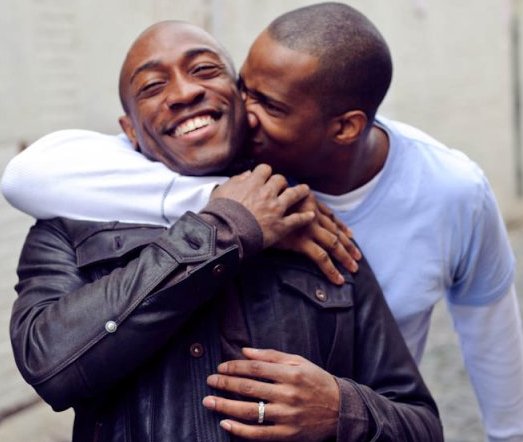

SEXUAL ORIENTATION
Sexual
orientation indicates who we are erotically attracted
to. It can sometimes be more helpful to label the two
ends of this scale as "attracted to women" and
"attracted to men," rather than "homosexual" and
"heterosexual," to avoid confusion as we discuss the
concepts of sex and gender. In the mid-range is
bisexuality. There are also people who are asexual
(attracted to neither men nor women). We tend to think
of most people as falling into one of the two extreme
categories (attracted to women or attracted to men),
whether they are straight or gay, with only a small
minority clustering around the bisexual middle. However,
Kinsey's studies showed that most people are in fact not
at one extreme of this continuum or the other, but
occupy some position between.
Sex and Gender Intro: A Beginner’s Guide
APA: Understanding Sexual Orientation and Gender
Identity
Lies We Need to Stop Telling Boys About Sex
Info: LGBTQ Community
Planned Parenthood: Sexual Orientation and Gender
PBS Video: Breaking the Binary
Turning Around Kids'
Assumptions of Gender Roles
Sex and Gender: What is the Difference?
Wikipedia: Sociology of Gender
Gender Rebels: Sex vs Gender
Animation: Gender and Sexuality
Sex and Gender Are Not the Same

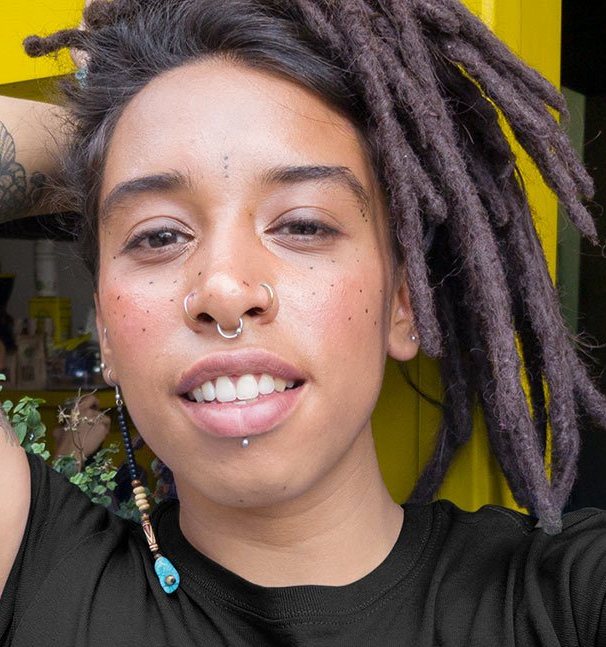
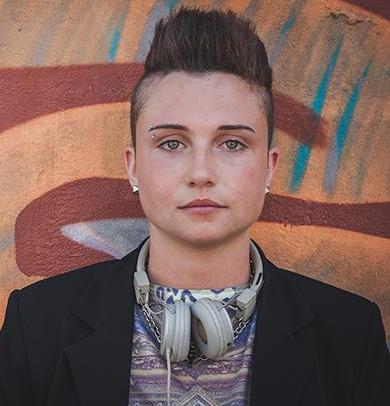

Misconceptions About Sex and Gender
There is Nothing Like a Dame
Bill Nye Science Guy: Sexuality and Gender Spectrum
Medical News Today: Difference Between Sex and Gender
World Health Organization: Gender,
Equity, Human Rights
LGBTQ: Acronyms and Words
Words Words
Explanation: Sexual
Orientation and Gender Identity
Scientific American: New Science of Sex and Gender
Video Fun: Expressing Myself My Way
Psychology Today: Sex Differences and Gender Differences
Am I Trans? Figuring Out
Your Gender
Beyond the
Binary
On the
spectrum...
In the
United States, gender has historically been defined as a
binary. Many other cultures have long recognized third
genders or do not recognize a binary that matches the
American understanding. In any case, the idea of gender
as an either/or issue is incorrect.
Someone who identifies with the gender that they were
assigned at birth is called “cisgender.” Someone who is
not cisgender and does not identify within the gender
binary (of man or woman, boy or girl) may identify as
nonbinary, genderfluid, or genderqueer, among other
identities. A person whose gender identity is different
from their natal sex might identify as transgender.
A 2016 review confirms that gender exists on a broad
spectrum, in contrast to the genetic definitions of sex.
A person may fully or partially identify with existing
gender roles. They may not identify with any gender
roles at all. People who do not identify with existing
gender binaries may identify as nonbinary. This umbrella
term covers a range of identities, including genderfluid,
bigender, and gender-neutral.
[Source:
Medical News Today]
Are There Any Real Differences Between Men and Women?
Kids' Honest Opinions About Being a Boy or Girl
PBS Video: Pink for Boys? Blue for Girls?
Lies We Need to Stop Telling Girls About Sex
Tutorial: Sexual
Orientation, Gender Identity, Sexual Expression, Sex
Characteristics
Info: Gender Queer
Kids Around the World:
Being a Boy or Girl
TED Talk: Sam Killermann Discusses Gender
Sexualities You Need to Know About
Courtney Act Answers Kids' Questions
About Gender

The Sociology of
Gender
The
influence of society and culture...
The
sociology of gender is a prominent subfield of
sociology. Social interaction directly correlated with
sociology regarding social structure. One of the most
important social structures is status. This is
determined based on position that an individual
possesses which effects how he/she will be treated by
society. One of the most important statuses an
individual claims is gender. Public discourse and the
academic literature generally use the term gender for
the perceived or projected (self-identified) masculinity
or femininity of a person.
The term "gender role" was coined by John Money in a
seminal 1955 paper where he defined it as "all those
things that a person says or does to disclose himself or
herself as having the status of boy or man, girl or
woman."
A person's gender is complex, encompassing countless
characteristics of appearance, speech, movement and
other factors not solely limited to biological sex.
Societies tend to have binary gender systems in which
everyone is categorized as male or female. Some
societies include a third gender role. For instance, the
Native American Two-Spirit people and the Hijras of
India.
Gender is
a social construct. As the World Health Organization
(WHO) explains: “Gender refers to the socially
constructed characteristics of women and men, such as
norms, roles, and relationships of and between groups of
women and men. It varies from society to society and can
be changed.”
Gender roles in some societies are more rigid than in
others. However, these are not always set in stone, and
roles and stereotypes can shift over time. A 2018
meta-analysis of public opinion polls about gender
stereotypes in the US reflects this shift.



Gender Rebels: Sex vs Gender
TED Talk: Gender is Not a Straight Line
Feminine: A Short Film
World Health Organization: Gender, Equity, Human Rights
This Is Me: Queer Identities
TED Talk: Gender Fluidity
Queer 101: Difference Between Sex and Gender
Ursula K. LeGuin: On Being a Man
Misconceptions About Sex and Gender
Info: Queer
Things Men Hear That Are Bad for Everyone
Medical News Today: Sex and Gender
LGBTQ: Acronyms and Words
Words Words
Dar Williams: When I Was a
Boy
Courtney Act Answers Kids' Questions
About Gender
Beyonce: If I Were a Boy
Pink & Blue: Communicating Gender to Children
TED Talk: Why I'm Done Trying to be Man Enough
Romantic
Attraction
In the
broad realm of sexual identity, consider these objective
terms used to clinically describe romantic attraction:
--Androphilic/Androsexual: Attraction to men, males,
and/or masculinity
--Gynephilic/Gynesexual: Attraction to women, females,
and/or femininity
--Skoliophilic/Skoliosexual: Attraction to non-cisgender
people, including genderqueer and transgender people and
expressions


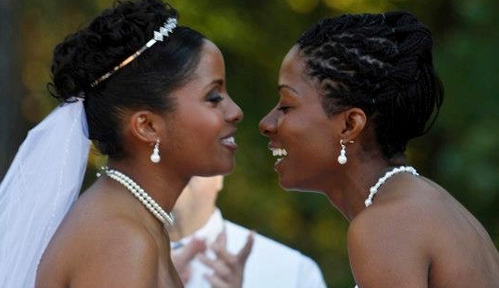
Misconceptions About Sex and Gender
Sex and Gender Are Not the Same
Advocate Magazine: What is Gender?
Gender Rebels: Sex vs Gender
Bill Nye Science Guy: Sexuality and Gender Spectrum
Medical News Today: Sex and Gender
Turning Around Kids'
Assumptions of Gender Roles
Psychology Today:
Sex-Relevant Terminology
Sex and Gender Terms Explained
Sexualities You Need to Know About
Animation: Gender and Sexuality




Sex and Gender Categories
Consider
these sex and gender categories and the related terms
within each category:
--Biological Sex: Male / Female / Intersex
--Gender
Expression: Masculine / Butch / Feminine / Femme /
Androgynous
--Gender
Identity: Cisgender / Transgender / Genderqueer /
Agender
--Sexual Orientation: Straight / Gay / Lesbian /
Bisexual / Pansexual / Asexual
--Romantic
Attraction: Aromantic / Biromantic / Panromantic
--Sexual
Identity: Androphilic / Gynephilic / Skoliophilic
--Commitment Style: Casual / Polyamorous / Monogamous
Sex and Gender Intro: A Beginner’s Guide
APA: Understanding Sexual Orientation and Gender
Identity
Info: Asexuality
Planned Parenthood: Sexual Orientation and Gender
Queer 101: Difference Between Sex and Gender
Sex and Gender Are Not the Same
Wikipedia: Sociology of Gender
Sex and Gender Model
Tutorial: Sexual
Orientation, Gender Identity, Sexual Expression, Sex
Characteristics
Medical News Today: Difference Between Sex and Gender
Kids Around the World:
Being a Boy or Girl
TED Talk: Sam Killermann Discusses Gender
Courtney Act Answers Kids' Questions
About Gender
Info: Intersex

Sexualities You Need to Know About
Sex Redefined: The Idea of 2 Sexes Is
Overly Simplistic
What is Morally Wrong With Homosexuality?
Chinese Debate: Sissies
vs. Macho Men
Dear Boys by FELIN
Sex and Gender: What is the Difference?
PBS Video: Pink for Boys? Blue for Girls?
Scientific American: New Science of Sex and Gender
Psychology Today: Sex Differences and Gender Differences
Video Explanation: Sexual Orientation, Gender Identity,
Gender Expression
LGBTQ: Acronyms and Words
Words Words
Are There Any Real Differences Between Men and Women?
Identity and Expression
Internal and external
A person may identify
and express their gender in different ways.
Gender identity is how a person feels internally, while
their expression is how they present themselves to the
outside world. For example, a person may identify as
nonbinary but present as a man to the outside world.
GLAAD (Gay and Lesbian Alliance Against Defamation)
describes gender identity as “one’s internal, personal
sense” of belonging at some point on or off of the
gender spectrum. The organization adds: “Most people
have a gender identity of man or woman (or boy or girl).
For some people, their gender identity does not fit
neatly into one of those two choices.”
GLAAD describes gender expression as: “External
manifestations of gender, expressed through one’s name,
pronouns, clothing, haircut, behavior, voice, or body
characteristics. Society identifies these cues as
masculine and feminine, although what is considered
masculine and feminine changes over time and varies by
culture.”
[Source:
Medical News Today]
Explanation: Sexual
Orientation and Gender Identity
Turning Around Kids'
Assumptions of Gender Roles
Jessica: Are Labels
Important?
Healthline: Sex and Gender
Sex and Gender Terms Explained
Info: Drag and Cross Dressing
Am I Trans? Figuring Out
Your Gender




Teaching Sex, Sexual Orientation, Gender Expression,
Gender Identity
Binary System
A significant barrier
to creating fully inclusive schools is the presumption
that sex, gender, and sexual orientation fit neatly into
a binary model. This binary world is populated by
boys and girls who are viewed as polar opposites. This
world conflates biology, gender expression, gender
identity, and sexual orientation, relegating people to
rigid categories: male or female, gay or straight.
Schools have a
history of reinforcing binary perceptions of sex and
gender. Even before children enter most schools for the
first time, parents or guardians are asked to check male
or female boxes on registration forms. On the first day
of school, teachers might shepherd students to class in
boy and girl lines. Restrooms are designated for boys
and girls. Everywhere there are expectations about what
kind of imaginative play and dress-up is appropriate for
whom, about who is naturally rambunctious and who is
predestined to quiet studying. As students get older,
they are subjected to gendered expectations about
extracurricular activities, dating and dress, even what
colleges and careers they’re encouraged to pursue after
graduation.
If we truly want to
include all students, we need to look beyond binaries to
create practices that include school communities’
diverse representation of biological sex, gender
identity, gender expression, and sexual orientation.

Taylor Swift: I'd Be The Man
Jessica: Are Labels
Important?
Turning Around Kids'
Assumptions of Gender Roles
Sex and Gender Terms Explained
Things Women Hear in a Lifetime That Men Just Don’t
Healthline: Sex and Gender
Info: Romantic Orientation
Scarleteen: Sex Ed For The Real
World
TED Talk: Why is Gender Identity so Important?
Is
Gender a Social Construct?
Biological Sex
Sex refers to a
person’s anatomy, physical attributes such as external
sex organs, sex chromosomes, and internal reproductive
structures. For most people, the anatomical
indicators of sex line up in a way that is typically
understood as male or female. However, intersex
conditions also occur naturally in all species,
including humans. Intersex refers to a variety of
conditions in which an individual is born with
reproductive or sexual anatomy that doesn’t fit the
typical understanding of female or male bodies.
In the past three
decades, more than 25 genes have been identified that
were once believed to be associated solely with male or
female biology, but in fact exhibit more complex,
nonbinary variations. With the advent of new scientific
knowledge, it is increasingly evident that biological
sex does not fit a binary model. Intersex conditions are
increasingly being recognized as naturally occurring
variations of human physiology.
Following years of
organizing by intersex activists, momentum is growing to
end what was once a standard practice of
“gender-normalizing surgery” performed on intersex
infants with ambiguous genitalia. In 2013, the United
Nations condemned the use of this unnecessary surgery on
infants, putting it in the same category as involuntary
sterilization, unethical experimentation or reparative
therapy when enforced or administered without the free
and informed consent of the person receiving the
surgery.
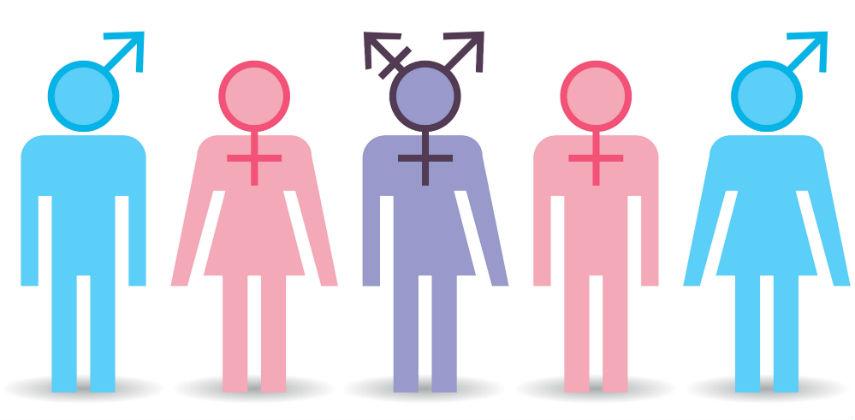
Sexualities You Need to Know About
Ursula K. LeGuin: On Being a Man
LGBTQ: Acronyms and Words
Words Words
Tutorial: Sexual
Orientation, Gender Identity, Sexual Expression, Sex
Characteristics
Psychology Today:
Sex-Relevant Terminology
Glee Video: If I Were a Boy
World Health Organization: Gender, Equity, Human Rights
Kids Around the World:
Being a Boy or Girl
Animation: Gender and Sexuality
Gender and Gender Identity
Gender Identity
Gender identity is an
individual’s deeply held sense of being male, female, or
another gender. This is separate from biological sex.
Some children become aware at a very young age that
their gender identity does not align with their physical
sex characteristics, even expressing the disconnect as
soon as they can talk. Other transgender and
gender-expansive people recognize their gender identity
during adolescence or adulthood.
Individuals whose
biological sex and gender identity “match” rarely think
about the alignment of biology and identity because they
have the privilege of being considered normal by
society. People whose gender identity and biological sex
align are called cisgender. Cisgender is an important
word because it names the dominant experience rather
than simply seeing it as the default.
Individuals living
comfortably outside of typical male/female expectations
and identities are found in every region of the globe.
The calabai and calalai of Indonesia, the two-spirit
Native Americans found in some First Nation cultures,
and the hijra of India all represent more complex
understandings of gender than a binary gender model
allows. At least seven countries (Australia, Bangladesh,
Germany, India, Nepal, New Zealand, Pakistan) recognize
a third gender for legal documents. As people around the
world use a growing variety of terms to communicate
their gender identities, Facebook now offers its users
52 options with which to define their gender.

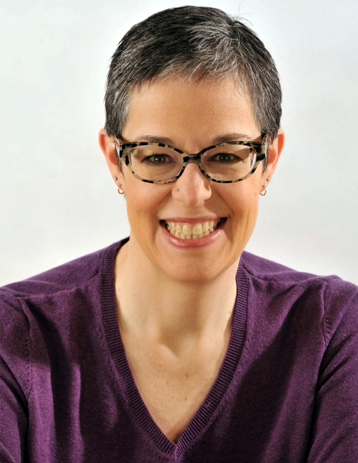


Gender Bender
Ted Talk: Gender is Not a Straight Line
Medical News Today: Sex and Gender
Info: Sexual Orientation
Lies We Need to Stop Telling Girls About Sex
Genderbread Person
There is Nothing Like a Dame
Sex Redefined: The Idea of 2 Sexes Is
Overly Simplistic
Vihart: On Gender
Wikipedia: Sexual Orientation
Advocate Mag: What is Gender?
Video Fun: Expressing Myself My Way
Info: Gender Identity
TED Talk: Sam Killermann Discusses Gender
Lies We Need to Stop Telling Boys About Sex
Ted Talk: Gender Fluidity

Dar Williams: When I Was a Boy
Sex and Gender Model
Breaking Down The Binary: Key Differences Between Sex
and Gender
Gender Rebels: Sex vs Gender
Queer 101: Difference Between Sex and Gender
Explanation: Sexual
Orientation and Gender Identity
Taylor Swift: I'd Be The Man
Sex and Gender Are Not the Same
Sexual Orientation, Gender Identity, Gender Expression
Info: Gender Expression
PBS Video: Pink for Boys? Blue for Girls?
Sex and Gender Terms Explained
Gender Expression
Gender expression can
be defined as the way we show our gender to the world
around us. Societal expectations of gender expression
are reinforced in almost every area of life. Even very
young children are clear about the gendered choices that
boys and girls are “supposed to” make in relation to
toys, colors, clothes, games and activities.
Girls whose gender
expression is seen as somewhat masculine are often
considered tomboys. Depending on the context and the
degree to which they transgress norms, tomboys might be
seen positively, neutrally or negatively. For example, a
girl who identifies as a gamer geek, cuts her hair short
and wears clothing perceived as masculine may be labeled
as a “cute tomboy” or met with words intended to hurt,
such as dyke or freak.
Positive or neutral
labels are harder to come by for boys whose sex and
gender expression are seen as incongruent. Common words
used to describe such boys tend to be delivered with
negative (sometimes hateful) intentions, words like
sissy and faggot. There also is little room
for boys to expand their gender expression. Just wearing
a scarf or walking in a stereotypically feminine way can
lead to abuse from peers, educators or family members.

Misconceptions About Sex and Gender
Sex and Gender Are Not the Same
Advocate Mag: What is Gender?
Psychology Today:
Sex-Relevant Terminology
Sex and Gender Terms Explained
Sexualities You Need to Know About
Animation: Gender and Sexuality
Sexual Orientation
Sexual orientation is
about our physical, emotional and/or romantic
attractions to others. Like gender identity, sexual
orientation is internally held knowledge. In multiple
studies, LGBTQ youth reported being aware of their
sexual orientation during elementary school, but waited
to disclose their orientation to others until middle or
high school.
Students might
identify as bisexual, pansexual, queer, asexual, or use
a host of other words that reflect their capacity to be
attracted to more than one sex or gender or not to feel
sexual attraction at all. This emerging language
illuminates a complex world in which simple either/or
designations such as gay or straight are insufficient.
The overlap and
conflation of gender identity and sexual orientation can
be confusing for individuals trying to make sense of
their own identities as well as for those who are clear
about their identities. It can also be complicated for
anyone seeking to support them. In her book Gender
Born, Gender Made, psychologist Diane Ehrensaft
describes a teenage client who, over the course of a few
weeks, identified in seemingly contradicting ways,
including as androgynous, as a gay boy and, eventually,
as a heterosexual transgender female. This young person
was involved in a dynamic process that illustrated both
the way sexual orientation and gender identity are
intertwined and how they are separate.

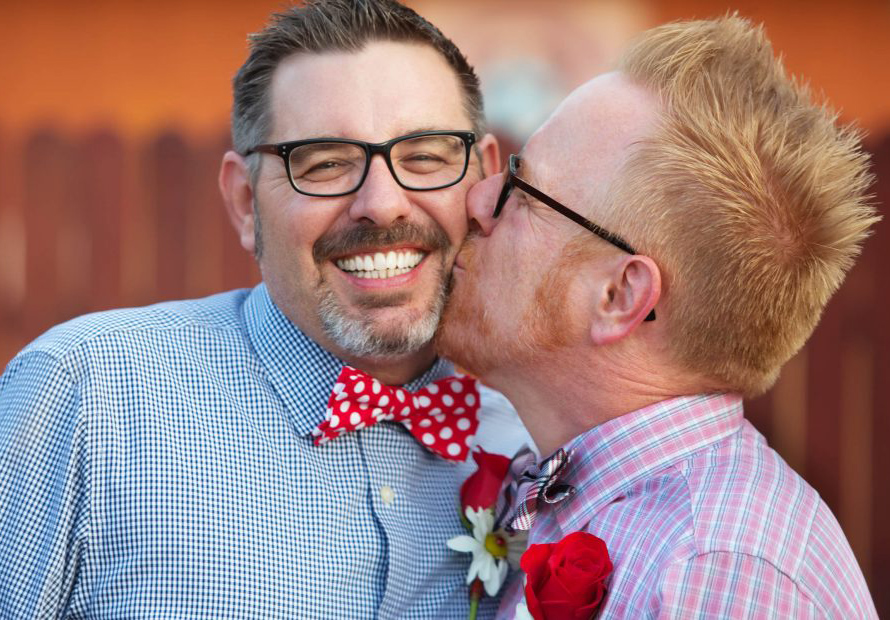


Embracing a Spectrum Model
As we have seen,
binary notions of gender, biology, and sexual
orientation exclude large swaths of human diversity.
This diversity can be better understood by using
spectrum-based models. Spectra make room for anyone
whose experiences do not narrowly fit into binary
choices such as man/woman, male/female,
feminine/masculine, or straight/gay.
Gender-expansive and
genderqueer are two of many terms used by people to
describe themselves as somewhere on a gender spectrum or
outside of the either/or choices relating to sex and
gender. Other terms include gender creative, gender
variant, gender fluid, gender non-conforming, and gender
bender.
A spectrum model not
only makes room for people who are gender-expansive but
for those who are perceived to be more typical as well.
A spectrum provides an avenue to a deeper understanding
of the separate yet interrelated concepts of biological
sex, gender identity, gender expression and sexual
orientation. For educators, this understanding is a
critical first step toward changing school-based
practices and toward being advocates for all students,
regardless of where they fit on any spectrum.
[Source: Teaching
Tolerance]

Information
Handouts
LGBTQ Terminology
Frequently Asked Questions
Sex and Gender
Sexual
Orientation
Transgender
Gender Expression
Coming Out
Safe Zone Program
HOME
QUEER CAFE
│ LGBTQ Information Network │ Established 2017
|